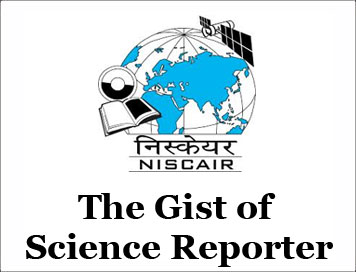(HOT) UPSC Current Affairs 2025 PDF
NEW! The Gist (NOV-2025) | E-BOOKS
(GIST OF SCIENCE REPORTER) Supermassive Black Hole LID-568
(GIST OF SCIENCE REPORTER) Supermassive Black Hole LID-568
(DECEMBER-2024)
Supermassive Black Hole LID-568
-
According to a study published in the journal Nature Astronomy, LID-568 is expanding at an unprecedented rate challenging the conventional understanding of black holes.
Key Details
-
A supermassive black hole, designated LID-568, recently observed approximately 1.5 billion years after the Big Bang, LID-568 is growing by devouring material at a speed 40 times higher than the theoretical Eddington limit, challenging existing theories about the evolution of supermassive black holes.
-
The discovery was made by a cross-institutional team of Gemini Observatory/NSF NOIRLab, using the James Webb Space Telescope’s (JWST) exceptional infrared observation capabilities.
-
LID-568 a black hole, was previously identified by the Chandra X-ray Observatory, but observing it was challenging due to its faint appearance from Earth.
About Black hole and related theories
-
A black hole is a cosmic body of extremely intense gravity from which even light cannot escape. Black holes usually cannot be observed directly, but they can be “observed” by the effects of their enormous gravitational fields on nearby matter.
-
Formation: A black hole can be formed by the death of a massive star. When such a star has exhausted the internal thermonuclear fuels in its core at the end of its life, the core becomes unstable and gravitationally collapses inward upon itself, and the star’s outer layers are blown away.
-
General theory of relativity. Albert Einstein first predicted the existence of black holes in 1916, with his general theory of relativity. According to Einstein, matter and energy exist on a background of space and time. Objects distort the fabric of space-time based on their mass- more massive objects have a greater effect.
-
Quantum theory suggests that there exist virtual particles popping in and out of existence all the time. When this happens, a particle and its companion anti-particle appear.
-
Big Bang theory: The Big Bang Theory given by Hubble, is the leading explanation for how the universe began. Simply put, it says the universe as we know it started with an infinitely hot and dense single point that inflated and stretched — first at unimaginable speeds, and then at a more measurable rate — over the next 13.7 billion years to the still-expanding cosmos that we know today.
-
The Eddington limit is a theoretical boundary that describes the maximum rate at which a star or black hole can consume matter or emit radiation:
Explanation
The Eddington limit is the point at which the outward pressure of radiation from a star or black hole balances the inward force of gravity.
Significance
- If a star or black hole exceeds the Eddington limit, it will either blow off its outer layers or initiate a strong stellar wind.
CLICK HERE TO DOWNLOAD FULL PDF
CLICK HERE TO DOWNLOAD UPSC E-BOOKS
Study Material for UPSC General Studies Pre Cum Mains
Get The Gist 1 Year Subscription Online
Click Here to Download More Free Sample Material
<<Go Back To Main Page
Courtesy: Science Reporter



